Filter by

Eutrophication and Oligotrophication in Japanese Estuaries The present statu…
This book presents lessons learnt from Japan’s past, in relation to coastal waters, industrial pollutants and concentrated urban populations. It examines ecosystem damage and pollution in coastal sea areas and addresses the question: What is the present status of Japanese estuaries from the view point of eutrophication and oligotrophication? The authors describe three typical situations, name…
- Edition
- -
- ISBN/ISSN
- 978-94-017-9915-7
- Collation
- 17 b/w illustrations, 140 illustrations in colour
- Series Title
- -
- Call Number
- -

Integrated Analysis of Interglacial Climate Dynamics (INTERDYNAMIC)
The work addresses the following questions in the context of interglacial climate dynamics: (i) What are the amplitudes of natural climate variations on timescales of several years to millennia? (ii) Do abrupt changes in the large-scale circulation of the Atlantic Ocean occur in interglacials? (iii) Which biogeochemical feedback mechanisms control the natural limits of atmospheric concentration…
- Edition
- -
- ISBN/ISSN
- 978-3-319-00692-5
- Collation
- VII, 139
- Series Title
- -
- Call Number
- 550 INT

Estuarine Morphodynamics of the Sunderbans
This book is the outcome of rigorous and continuous research work done by the author over about three decades on the open ecosystem and dynamic environment of the estuarine Sunderbans. The objective of this work is to identify the field and factors changing gradually upon this active delta over the years, decades and centuries. The deltaic Sunderbans yet not mature enough, has been changing in …
- Edition
- -
- ISBN/ISSN
- 978-3-319-11343-2
- Collation
- 26 b/w illustrations, 33 illustrations in colour
- Series Title
- -
- Call Number
- -
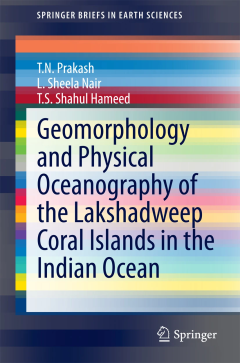
Geomorphology and Physical Oceanography of the Lakshadweep Coral Islands in t…
The Lakshadweep islands are a group of 36 coral islands in the Indian Ocean. These small islands are unique for their aquatic bio-diversity and vast blue lagoons. This book presents the results of studies done by the authors during the period 1990 to 2009 that address the beach morphology, hydrodynamics, energy resources and management options with special reference to the issue of both natural…
- Edition
- -
- ISBN/ISSN
- 978-3-319-12366-0
- Collation
- -
- Series Title
- -
- Call Number
- 551.6 PRA g

Towards an Interdisciplinary Approach in Earth System Science
This book describes the latest advances at the Helmholtz “Earth System Science Research School” where scientists from the Alfred Wegener Institute in Bremerhaven, the University of Bremen, and the Jacobs University are involved in research. One of the greatest challenges is understanding ongoing environmental changes. The longer the time scale the more components of the Earth system are in…
- Edition
- 1
- ISBN/ISSN
- 978-3-319-13865-7
- Collation
- X, 251
- Series Title
- Springer Earth System Sciences
- Call Number
- -
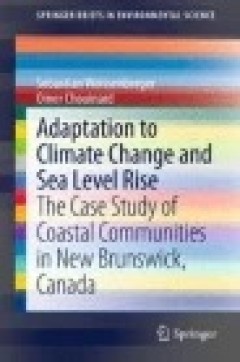
Adaptation to Climate Change and Sea Level Rise: The Case Study of Coastal Co…
The book provides a concise and interdisciplinary outlook on the impacts of climate change on coastal areas and how coastal communities adapt to them. The first chapter analyses how sea level rise, changing ocean conditions, or increased climate variability and the socio-environmental context of the coastal zone leads to vulnerable communities. The second chapter addresses adaptation strategies…
- Edition
- Ed. 1
- ISBN/ISSN
- 978-94-017-9888-4
- Collation
- VI, 100
- Series Title
- SpringerBriefs in Environmental Science
- Call Number
- 551.6 WEI a
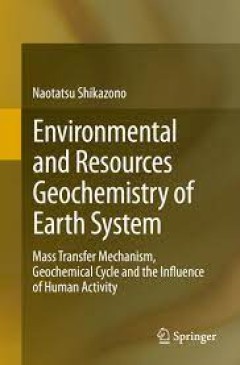
Environmental and Resources Geochemistry of Earth System Mass Transfer Mecha…
The Earth system consists of subsystems that include the atmosphere, hydrosphere (water), geosphere (rocks, minerals), biosphere, and humans. In order to understand these subsystems and their interactions, it is essential to clarify the mass transfer mechanism, geochemical cycle, and influence of human activity on the natural environment. This book presents fundamental theories (thermodynamics,…
- Edition
- -
- ISBN/ISSN
- 978-4-431-54904-8
- Collation
- 38 b/w illustrations, 125 illustrations in colour
- Series Title
- -
- Call Number
- -
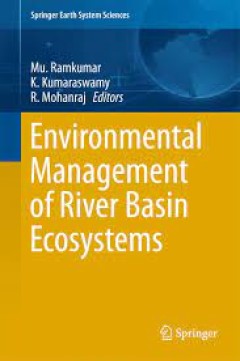
Environmental Management of River Basin Ecosystems
This book offers a unique collection of inter- and multidisciplinary studies on river systems. Rivers have been the prime source of sustenance since the advent of civilization and river systems often form the basis for agriculture, transport, water, and land for domestic, commercial, and industrial activities, fostering economic prosperity. A river basin is a basic geographical and climatologic…
- Edition
- -
- ISBN/ISSN
- 978-3-319-13425-3
- Collation
- 279 b/w illustrations, 8 illustrations in colour
- Series Title
- -
- Call Number
- -
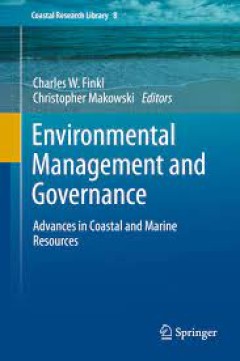
Environmental Management and Governance Advances in Coastal and Marine Resou…
This book deals with recent advances in coastal marine environmental management and governance. Various chapters consider new aspects of conservation, assessment of ecosystem health status, environmental survey and protection, frameworks of ocean service and governance, new applications of geo processing and GIS technology, beach management, aquaculture site selection, assessment of water quali…
- Edition
- -
- ISBN/ISSN
- 978-3-319-06305-8
- Collation
- 33 b/w illustrations, 120 illustrations in colour
- Series Title
- -
- Call Number
- -
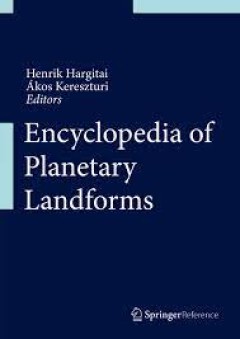
Encyclopedia of Planetary Landforms
This encyclopedia provides a snapshot of our current geological knowledge on solid-surface Solar System bodies. Each entry contains information about the features’ morphology, its interpretation, proposed formation models, distribution and occurrence, planetary or terrestrial analogs, and research history. The entries are fully referenced. All image captions include original image IDs. More …
- Edition
- -
- ISBN/ISSN
- 978-1-4614-3134-3
- Collation
- 1287 b/w illustrations, 575 illustrations in colour
- Series Title
- -
- Call Number
- -
 Computer Science, Information & General Works
Computer Science, Information & General Works  Philosophy & Psychology
Philosophy & Psychology  Religion
Religion  Social Sciences
Social Sciences  Language
Language  Pure Science
Pure Science  Applied Sciences
Applied Sciences  Art & Recreation
Art & Recreation  Literature
Literature  History & Geography
History & Geography